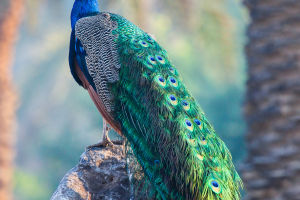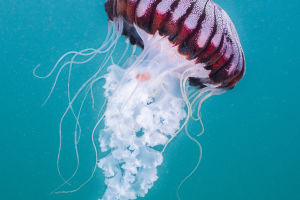Starfish, adored for their colorful and lovely appearance, are not only admired for their charm but also for their incredible superpower of "regeneration.
"Regeneration, a common phenomenon in nature, refers to the process of repairing and restoring lost or damaged tissues and organs.
Starfish possess exceptional regenerative abilities, making them remarkable splitters within the echinoderm family. Echinoderms are a group of invertebrates known for their robust regenerative capabilities, and starfish exemplify this trait.
When faced with threats, starfish swiftly resort to "breaking their arms" to escape. Astonishingly, a new wrist grows rapidly after the break, and even if the wrist fractures into segments, each fragment often regenerates into a new starfish.
Starfish thrive in marine environments, typically inhabiting wave-free intertidal and near-shore waters.
To comprehend starfish regeneration, understanding their body structure is crucial.
With a five-fold symmetry, starfish can be divided into five identical parts along a central axis. Their bodies consist of a central body disk and arms extending from the disk. While common starfish possess five arms, specialized species may have more or fewer.
Starfish lack heads, tails, left-right differentiation, and sensory organs such as eyes, ears, or noses. Respiration and movement are achieved through a unique hydraulic system composed of tubes and tube feet dispersed throughout their bodies.
Water enters through a dorsal opening, is transported to individual carapaces, and is propelled through tube feet equipped with small suction cups. Tube feet facilitate sensing, locomotion, and food acquisition.
Each starfish arm operates as a semi-independent organism, hosting separate organs for locomotion, digestion, reproduction, and excretion.
This unique structure enables a broken arm of a starfish to generate a new starfish as long as it retains a portion of the central disk. In some cases, starfish can regenerate a complete body from a severed arm without carrying remnants of the central disk.
Echinoderms commonly reproduce asexually, allowing the regrowth of lost organs, such as carapaces, external appendages (spines and forked spines), and internal organs.
Even injuries like heat, oxygen deprivation, pollution, or waves pose no significant danger as the lost parts regenerate swiftly and intact. Regeneration of arms has become a distinctive characteristic of long-wristed echinoderms.
Some studies suggest that their regenerative prowess stems from an unproven genetic factor. This factor allows cells to collaborate with other tissues to regenerate limbs or revert to embryonic development, eventually producing new individuals.
Scientists observe that the simpler and more delicate an organism, the greater its regenerative capacity, ensuring survival within the natural order of elimination.
While some starfish structures can swiftly heal or develop into new individuals, more complex structures with heightened resilience exhibit limited regenerative abilities, focusing primarily on healing rather than organ regeneration.


